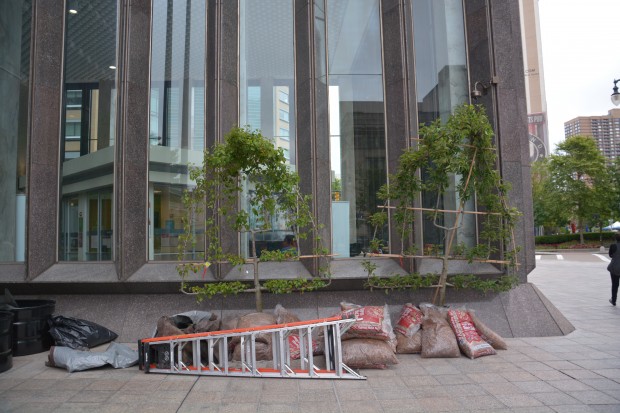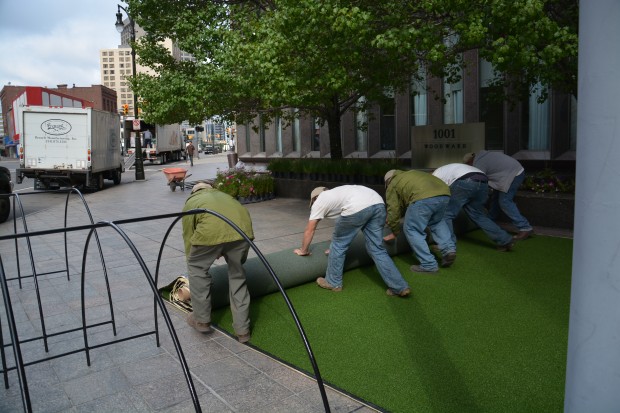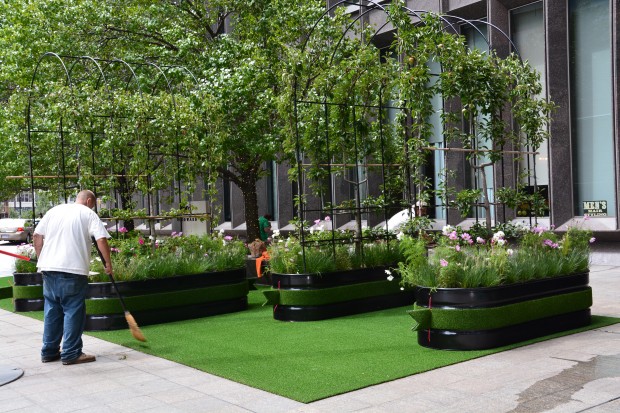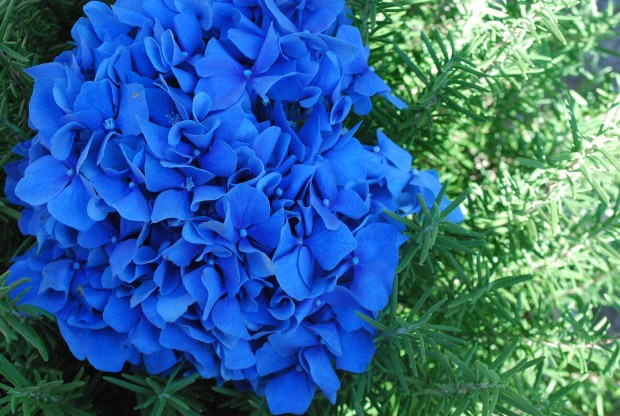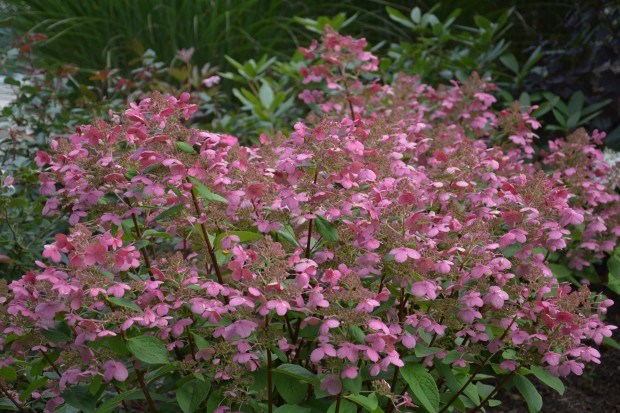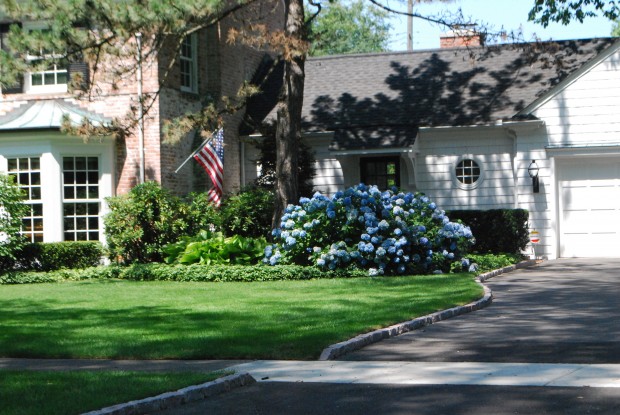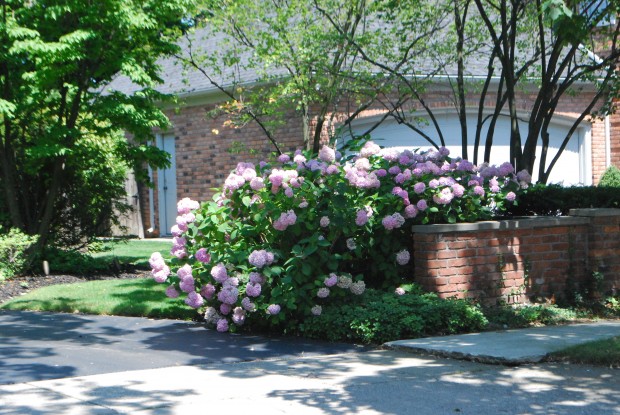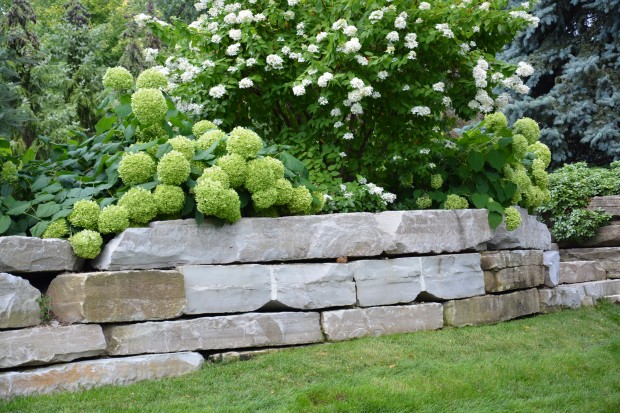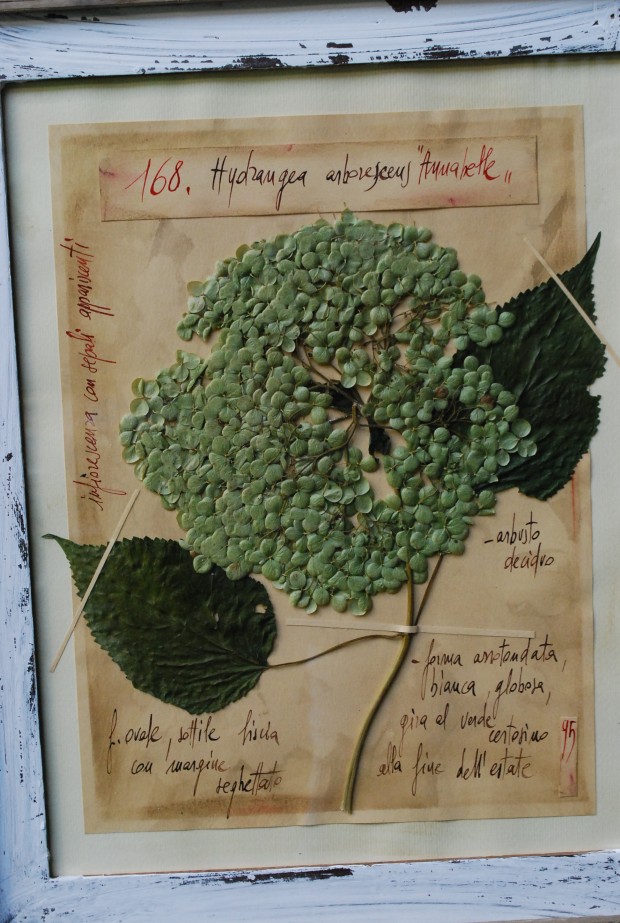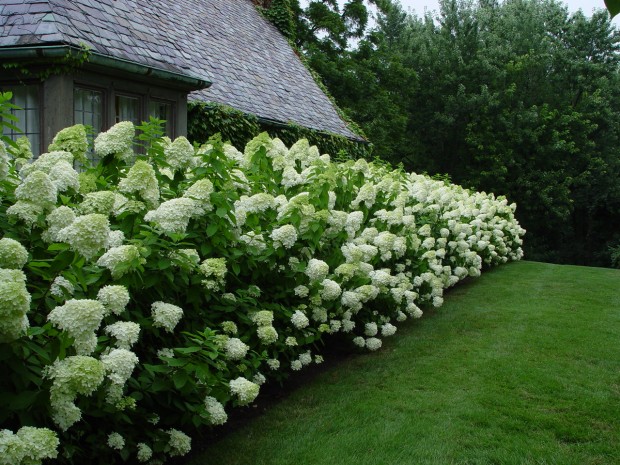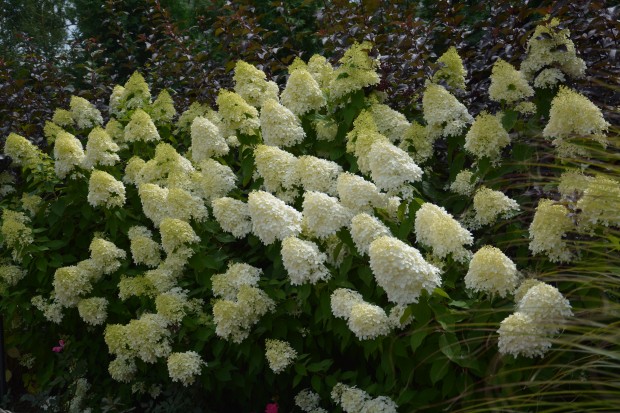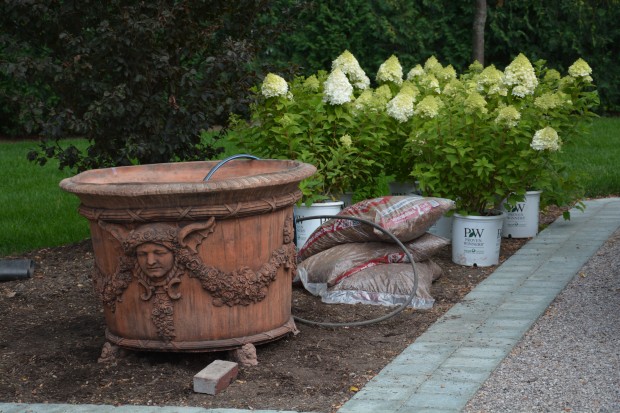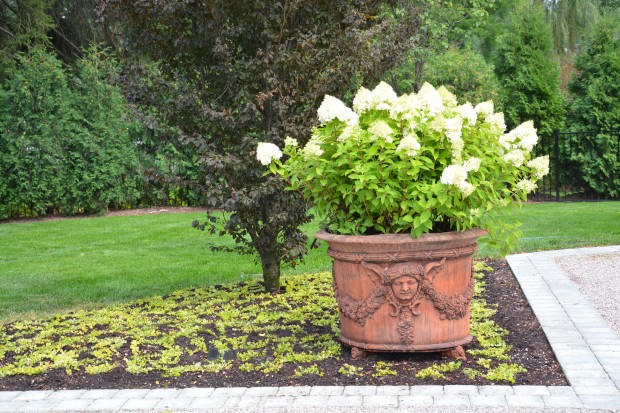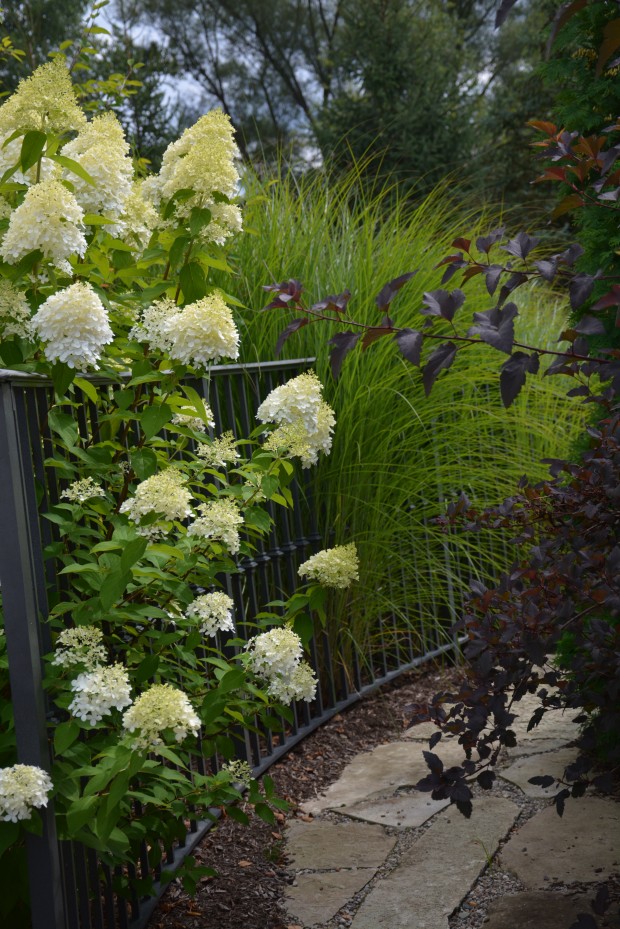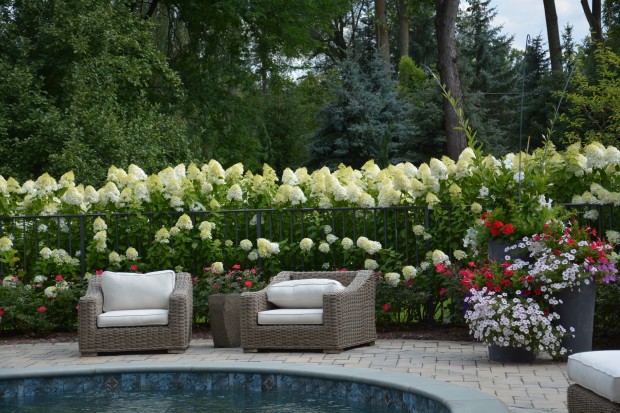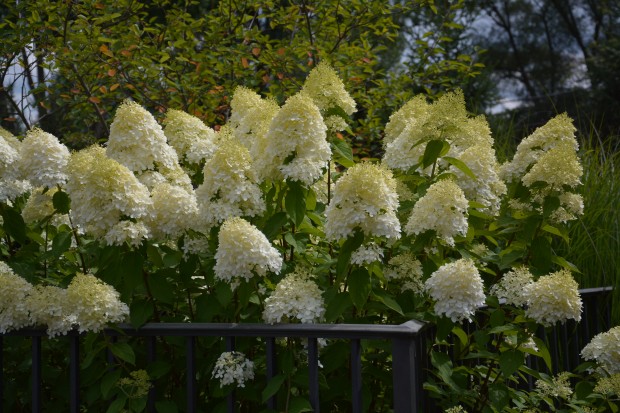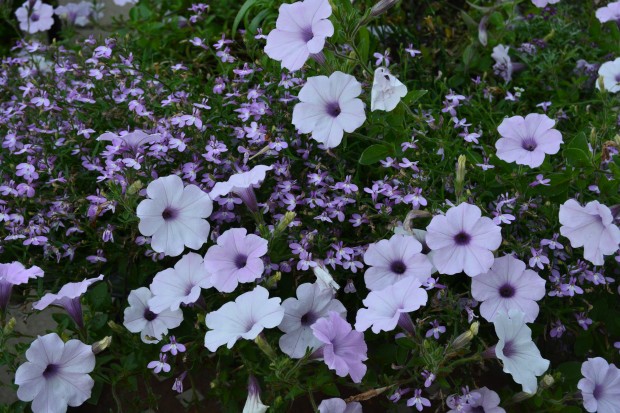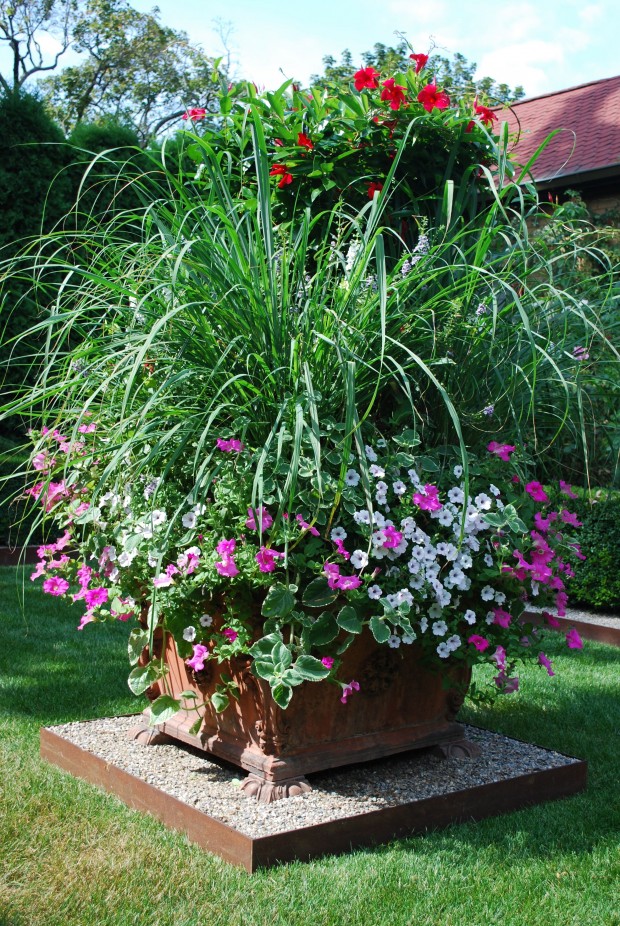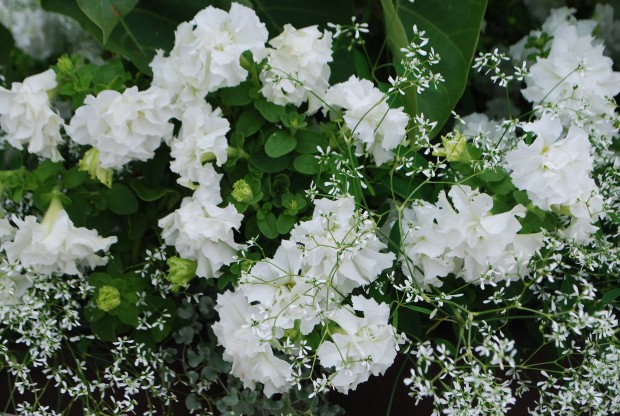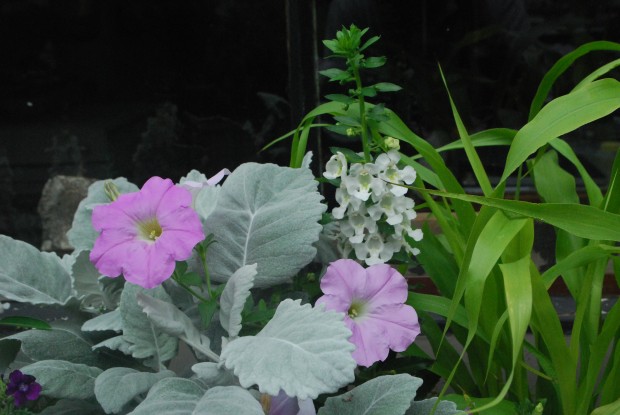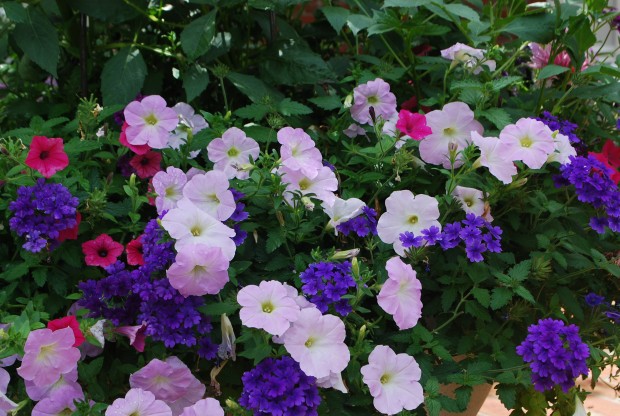
A multi-story building downtown at 1001 Woodward had an entry plaza that I would call chilly and uninviting. Bedrock Realty, the new owner, has an idea to warm things up. Kelly Deines of Rossetti Architects asked if I could put together a landscape that would include 2 pair of our espaliered arbors. We were happy to oblige. The livestock tanks-courtesy of our local farm store. The steel arbors-courtesy of Buck and his group at Branch.
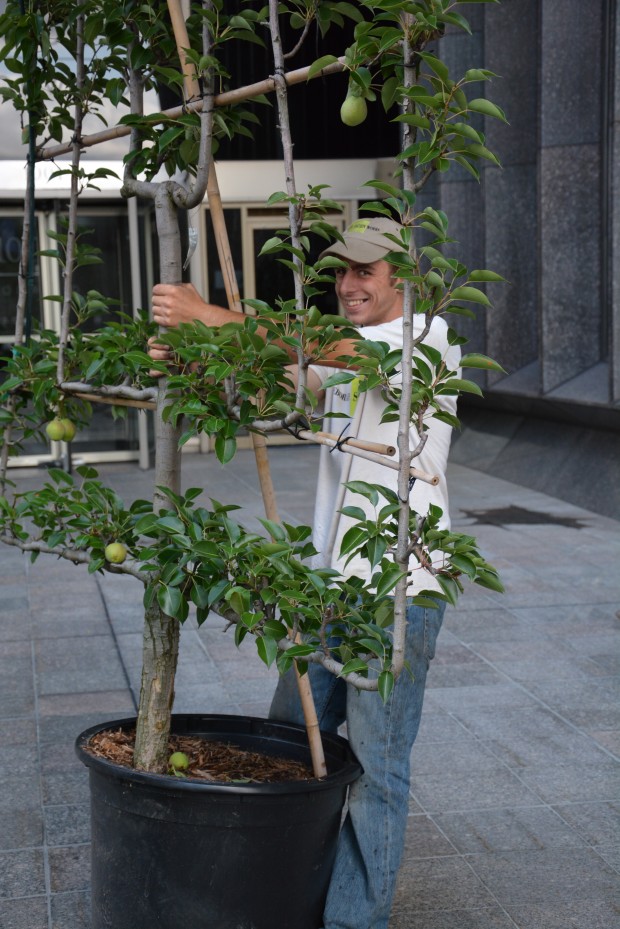 Owen was one of a crew of 7 that helped plant those trees.
Owen was one of a crew of 7 that helped plant those trees.
 cosmos and pennisetum under planting the espaliers
cosmos and pennisetum under planting the espaliers
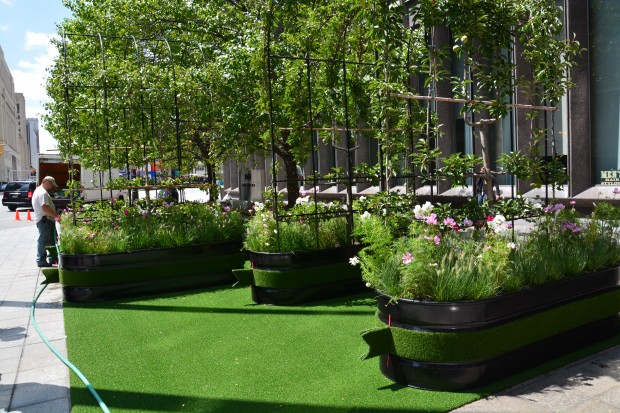 artificial turf bands on the stock tanks
artificial turf bands on the stock tanks
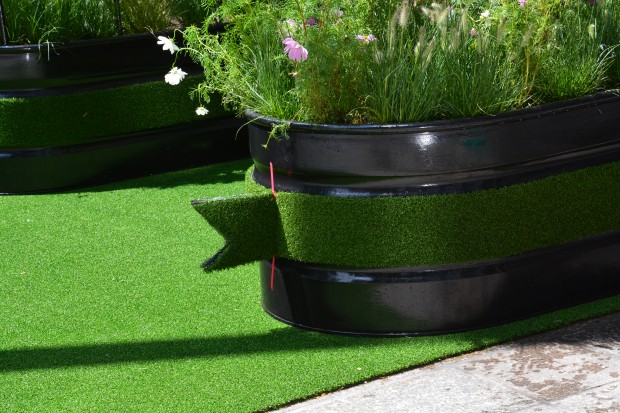 artificial turf secured with hot pink zip ties
artificial turf secured with hot pink zip ties
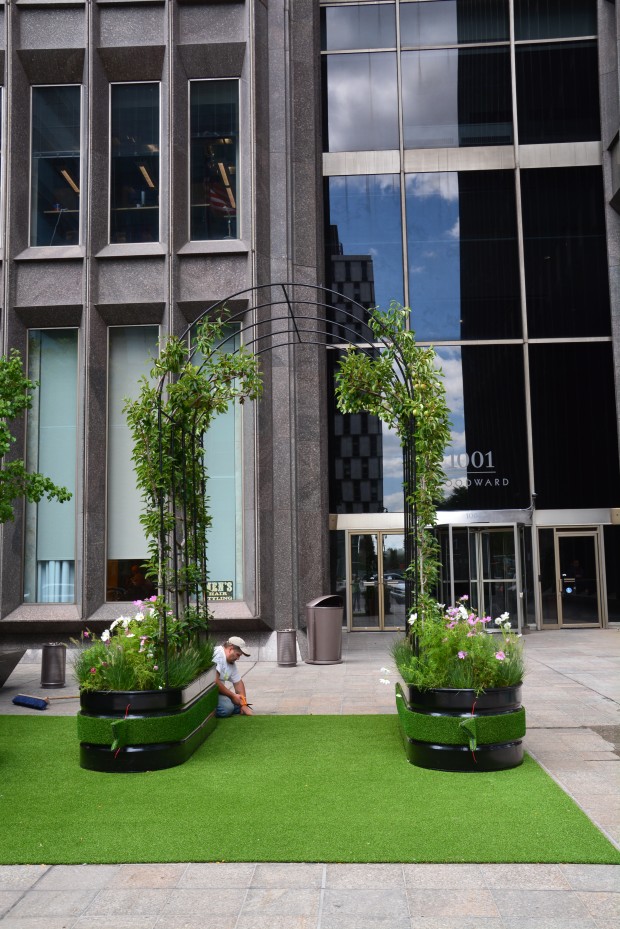 trimming the turf square and true
trimming the turf square and true
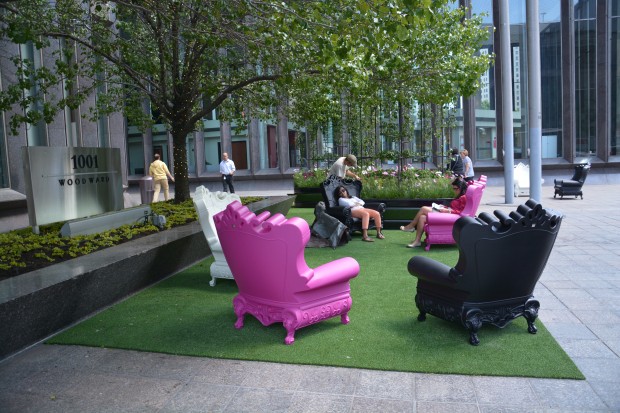 urethane furniture specified and installed by Rossetti Architects
urethane furniture specified and installed by Rossetti Architects
 The linden trees in a granite planter box were underplanted with creeping jenny. Espaliered trees, artificial turf, pink zip ties, galvanized metal livestock watering tanks, cosmos, little bunny pennisetum, molded urethane French style arm chairs and creeping jenny and a plaza typical of a vintage urban skyscraper-landscape materials that came together to create a place for people to congregate outdoors.
The linden trees in a granite planter box were underplanted with creeping jenny. Espaliered trees, artificial turf, pink zip ties, galvanized metal livestock watering tanks, cosmos, little bunny pennisetum, molded urethane French style arm chairs and creeping jenny and a plaza typical of a vintage urban skyscraper-landscape materials that came together to create a place for people to congregate outdoors.
